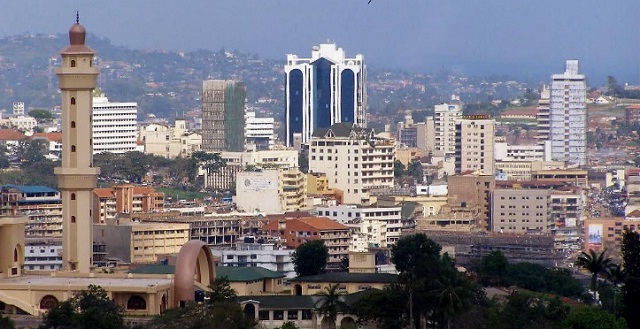
How NRM politics have made Kampala a dysfunctional city and what cannot be done about it
THE LAST WORD | ANDREW M. MWENDA | As we enter 2020, Kampala has become a dysfunctional city. The heavy rains of 2019 have left most of the roads in a horrible state of disrepair. Most streets are filled with potholes, some even with craters. Motorists have to drive at the slowest speed. This makes cars pile behind each other leading to chronic traffic jams that have made movement around the city a nightmare. The only roads that have not been destroyed by the rains are those built under the leadership of Jennifer Musisi. This is not to blame the old Kampala City Council (KCC), which was led and dominated by the opposition Democratic Party (DP). True it was filled with gross corrupt and incompetent. But equally, it was grossly underfunded.
Thus when the Kampala Capital City Authority (KCCA) was created in 2011, there was a glimmer of hope that finally the government of President Yoweri Museveni had woken up to the challenges of the city. A new and more professional technical team was put in place and paid better. The budget for the city was significantly increased. But this increase fell far short of the required investment in city roads. Uganda is a poor country that cannot afford most of the things our elites demand from the state. However, the budget for city roads is not commensurate with the public revenues and expenditures of Uganda.
Uganda’s budget for roads this Financial Year is Shs5 trillion. It is because of this that our government has been able to develop fairly good national road network. One can drive from Soroti to Moroto and from Moroto to Nakapiripirit on brand new paved highways. Equally one can drive from Gulu through Nwoya to Nebbi, from Gulu to Kitgum to Nimule, from Mubende to Kakumiro, from Hoima to Kagadi, from Fort Port to Kamwenge and to Bundibugyo, from Mukono to Katosi – the list of brand new paved roads to small villages and towns is endless. It is always good to connect the country with road infrastructure like this. But what has been the opportunity cost of these investments?
Uganda Revenue Authority (URA) collects 75% of all revenues from Kampala and the surrounding Wakiso district. This makes Kampala the goose source of Uganda’s survival. However, the city receives a small fraction of the road budget and this has been so for decades. For instance, KCC’s budget in 2010/11 Financial Year had been Shs100 billion of which only Shs30 billion was for roads. Under KCCA, the city budget grew to Shs146 billion in 2011/12 of which Shs43 billion was for roads. This Financial Year, KCCA budget is Shs500 billion of which Shs273 billion is for roads.
This means that out of the total national budget devoted to roads, Kampala and Wakiso, with 75% of tax revenues get only 5.5% of the road budget. This is an unmitigated disaster whose consequences for the economy are easy to see. An average person in Kampala spends 3.5 hours (one and a half hours in the morning and another two hours in the evening) in traffic jams every working day. This is largely (certainly not entirely) because the roads are too narrow and potholed to ensure a smooth flow of traffic.
There were two million registered voters in Kampala and Wakiso in 2016. These are people of working age. If we assume 80% registration, then Kampala and Wakiso could have 2.5 million working adults. If we assume 2 million of these have work, it means 3.5 million man-hours are lost every day or 1.3 billion man-hours lost per year. The economy has grown tremendously, creating a large middleclass, which has bought many cars. However, investment in city roads has not moved in tandem with this change. Why?
The NRM is essentially a rural movement with peasants forming the backbone of its support. Consequently most of its politics reflect this rural bias. In 1982, Harvard University political science professor, Robert Bates, published his classic, `Markets and States in Tropical Africa’. He argued that Africa’s economic decline was due to an “urban bias.” Governments sought to placate urban constituencies by controlling the prices of agricultural produce (using state owned marketing boards), by buying farmers’ produce at below market prices. Urban areas could buy food cheaply hence keeping urban discontent low but it impoverished farmers.
The NRM has turned this bias on its head. By liberalising crop marketing, it allowed farmers to reap the full market price of their crop. It has also removed taxes on nearly all inputs into agriculture and does not tax agricultural produce – not to mention it also abolished Graduated Tax. However, it has been taxing urban areas to extend free social services and public goods (hospitals, schools, clean water, electricity, good roads, free education, free healthcare etc.) to rural areas. The urban people who tend to vote against Museveni and his NRM are taxed to subsidise the peasants.
Of course there is some dividend to urban areas as a result of improving upcountry transport through paved roads. Now agricultural produce can be transported from rural areas into towns easily and cheaply thereby reducing the price of food for people in urban areas. But this gain is miniscule compared to the productivity loses suffered due to traffic dysfunctions in Kampala. The dilapidated state of roads, open sewers and other dirty, dusty characteristics expose people in Kampala to many health hazards as peasants enjoy.
The excessive focus on upcountry roads explains why the World Bank says return on investment in Uganda’s roads is negative. This is because our roads are built for political as opposed to economic reasons. What is the economic gain of a tarmac road from Moroto to Nakapiripirit? We know that political value of Karamoja: it votes for NRM and Museveni, while Kampala and Wakiso vote for the opposition. Even my home village now has a tarmac road and Museveni and NRM win the presidency and all parliamentary seats there.
Clearly what is good for Museveni’s politics is bad for Uganda’s economy. So the city can wallow in potholes and craters because it does not grease Museveni’s politics. Given that rural areas hold 70% of the total population of Uganda, it seems definite that given our democratic politics, change of government may not lead to change in this policy bias. Every politician seeking to win an election needs a rural base. It makes political sense to move resources from those who produce to those who consume.
****
 The Independent Uganda: You get the Truth we Pay the Price
The Independent Uganda: You get the Truth we Pay the Price




Interesting analysis. The devil is in the detail. A culture of new roads is not a prominent as maintenance of existing assets. Of the UGX 525bn Road Fund’s FY’s 2018/19 budget, 6% (UGX 30bn) went to KCCA (almost similar to the roads development allocation of 5% cited in the article). The total roads maintenance budget for 2019/20 has been reduced by UGX 100bn – and KCCA will receive ~UGX 25bn. This is peanuts to keep Kampala’s 2,100km in motorable condition.
Strong analysis as I hav always argued with my fellows. Constructing a road in rural far areas just shows how our resources are misplaced. We better start building flyovers over all roundabouts and road junctions to beat the current affixed jam in Kampala.
I would think that since metro Kampala accounts for over 60% of the tax revenues, providing services to the people so they can get to work and be more productive, and generate more taxable revenue would be a good idea. Kampalans lose way too many productive hrs navigating traffic. It makes grand economic sense to fix Kampala’s roads and its metro areas for sustainable development. What does National Planning Authority do?
Planning the city like it is the first urban urban place on earth is a weakness that is inherently Ugandan. Why not copy from better planned cities in other countries? Or check the colonial master plan. Have u noticed that most colonial towns have an elaborate sewer system? Yet for every trading centre getting elevated to city status it is poor pit latrines that are the fashion. Think of it how does traffic jam take priority in influencing urban plans. Let the planners take a longer view. Thank you